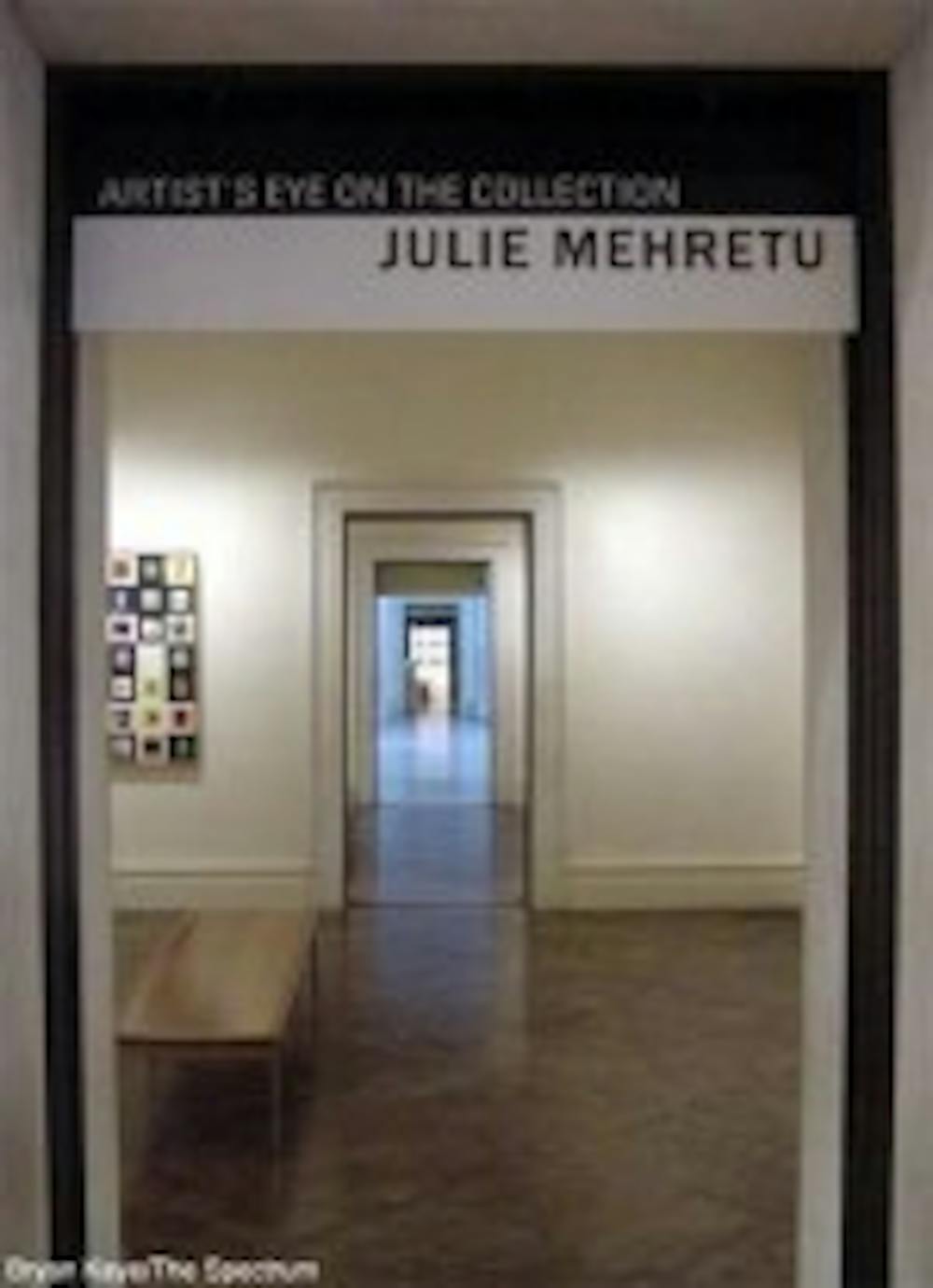Born in Ethiopia, raised in East Lansing, Michigan and schooled in both Senegal and Rhode Island, artist Julie Mehretu's life has been an ongoing voyage.
Now living in New York City, the contemporary abstract artist is starting to stake her claim in the art world.
Debuting twelve original large-scale paintings, as well as being the focal point of the Albright-Knox's first installation of "Artist's Eye on the Collection," Mehretu took to the Auditorium stage at the gallery to shed light on her dynamic approach to abstract art.
"My creative process in the studio is super-intuitive," Mehretu said. "That's what develops each individual work."
Her knack for combining vastly differing artistic mediums is at times a tough pill to swallow. Combining various architectural plans from such diverse settings as New York's LaGuardia Airport to the downtown landscape of Houston, Texas, with jump-out-of-the-picture splashes of reds, blues and oranges, she attempts to create a space where everything shown is significant.
"The evolution of the work happens really slowly. Little by little more information comes into the work."
"I wanted each mark to be full of meaningful information, where each mark seemed like a definitive social agent," she said.
In her explanations, Mehretu described a body of work that starts from the ground up, usually commencing with a simple cityscape. She spent hours in the library, going over city plans and blueprints before deciding to integrate them into her work.
Using these individual cityscapes or airport blueprints as a guide, she then makes a series of drawings that help capture the essence of each individual area. While each drawing may take merely a month to finish, the compilation of the drawings and the ensuing painting happen every six or so months.
Crises are depicted through a series of conflicting marks, where some civilized areas may be vanquished, with other marks may illustrate a bustling metropolis.
"These marks turn into maps of cityscapes," she said. "They each define themselves within the context of the other marks."
As a result, maps have become the basis for Mehretu's work.
"I layer the drawings like old geographical maps. I wanted the marks to have a sense of history, a sense of time," she said.
In illuminating her creative process and just how each piece was contrived, she described her belief that every mark has a certain interaction with all the other marks, making each individual space significant.
By mounting a link between the fabricated world and that of the real world, Mehretu's goal in many of the pieces was to, "use these architectural plans, like that of Houston, to then draw a narrative on top of it."
Incorporating various facets of city life, like stadiums, airports and large buildings, her work resembles a chaotic, crowded collection of people, places and things reminiscent of downtown Manhattan at lunch hour.
Outside the auditorium, a range of Mehretu's work was on display upstairs at the Albright-Knox. Excerpts from her 2003 series portray exactly what she intended. Pieces like "Battle Plan," where the explosion of color layered on top on mapped landscape provide for an intense scene of far meets near.
"Citadel" is much of the same, where a specific architectural design is the underlying foundation for an exuberance of color; making every specific section of the work noteworthy.
Situated nearby was the gallery's original incarnation of "Artist's Eye on the Collection: Julie Mehretu." In this exhibit, contemporary artists are asked to put their own spin on the Albright-Knox's permanent gallery.
Works such as Jackson Pollack's "Convergence" resided here, adding a splendor of color and interaction to the exhibit. While all the pieces were notable, the Pollack, along with Kara Walker's "African/American" truly stood out for their flare, originality and magnitude in modern and contemporary art.
From landscape narratives to gesteral abstractions, Mehretu's work maintained an original and deeply odd edge.





